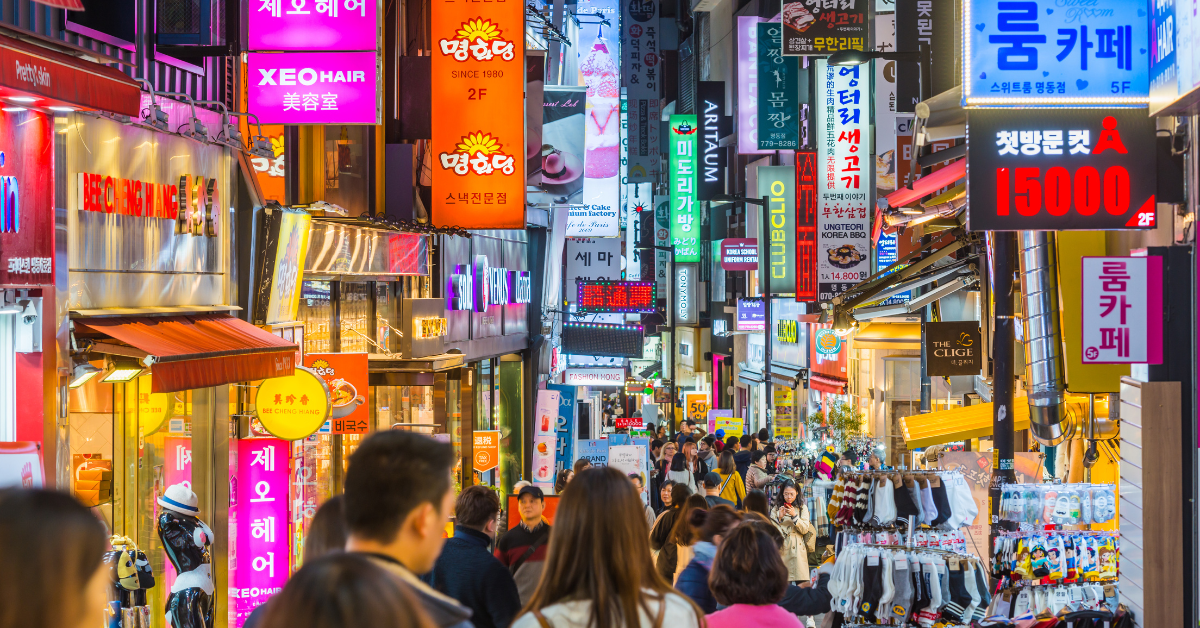Seoul is a dynamic city where tradition and modernity coexist, making it one of the most popular destinations for Japanese travelers. For many Japanese, the city is seen as close, affordable, and rich in experiences such as food, shopping, entertainment, and history. This article explores how Japanese people perceive Seoul and what attracts them most.
The Basic Image of Seoul for Japanese People
When Japanese people imagine Seoul, the first thing that comes to mind is that it is a “familiar and easily accessible city.” Since it only takes about two hours from Tokyo or Osaka, even first-time overseas travelers feel secure visiting. Furthermore, due to the influence of Korean dramas and K-POP, Seoul is strongly associated with being at the “forefront of trends.”
The cityscape combines high-rise buildings with traditional architecture, making Seoul recognized as a city where you can enjoy both the modern and the traditional. Tourists often combine visits to shopping districts with historical sites, allowing them to have diverse experiences even in a short stay.
Seoul as a Gourmet City
Food culture is at the core of Seoul’s appeal. While Korean cuisine is already widespread in Japan, many Japanese people visit Seoul specifically to “enjoy the authentic flavors.”
| Popular Korean Dishes Among Japanese Tourists | Features |
|---|---|
| Samgyeopsal | Thick slices of pork grilled and wrapped in vegetables |
| Kimchi Jjigae | Spicy stew made with fermented kimchi |
| Bibimbap | A signature dish mixing rice with toppings |
| Tteokbokki | Rice cakes simmered in a sweet and spicy sauce |
| Chicken & Beer | A Korean pub-style culture popular with youth |
Japanese travelers especially appreciate that the portions are large and reasonably priced. Korean food culture emphasizes sharing dishes, which makes meals more enjoyable for families and friends traveling together.
Seoul as a Hub of Shopping and Beauty
Seoul is known as a “beauty powerhouse” and is seen as the home of skincare and cosmetics for Japanese women. In Myeong-dong and Hongdae, travelers can buy the latest cosmetics at lower prices than in Japan. Many also visit for dermatological treatments or beauty spas.
Fashion is another highlight. Korean brands are valued for their design quality and affordable prices, leading many Japanese tourists to purchase large quantities of clothing and accessories.
| Shopping Area | Features |
|---|---|
| Myeong-dong | Center for cosmetics and fashion |
| Hongdae | Youth culture and art hub |
| Dongdaemun | Night markets open until late |
| Apgujeong | Luxury brand shopping district |
| Namdaemun Market | Traditional and lively market |
Seoul as a City of History and Culture
Seoul is also a place where visitors can deeply experience history. Palaces such as Gyeongbokgung and Changdeokgung are essential to understanding Korea’s past. In Insadong and Bukchon Hanok Village, visitors can encounter traditional houses and crafts, enriching their cultural experience.
Markets are another way to experience daily life. Namdaemun Market and Gwangjang Market are not only tourist spots but also windows into the lives of locals.
| Historical and Cultural Spots | Appeal |
|---|---|
| Gyeongbokgung | Representative palace of the Joseon Dynasty |
| Bukchon Hanok Village | Area preserving traditional Korean houses |
| Insadong | Street with traditional crafts and galleries |
| Namdaemun Market | Bustling and local shopping district |
| Gwangjang Market | Famous for street food and food stalls |
Entertainment and Nightlife
Seoul is widely recognized as an “entertainment city.” The influence of K-POP and Korean dramas has led to an increase in Japanese travelers attending concerts and fan events.
At night, street food stalls and night markets come alive. The culture of “chimaek” (chicken and beer) is especially popular, and because it resembles the Japanese izakaya style, it feels familiar and comfortable for Japanese visitors.
Seoul Through the Lens of Sports
Seoul is also attracting attention as a city for sports tourism. Korean professional baseball and soccer are popular among Japanese visitors. At stadiums, fans sing and dance together, creating a strong sense of unity that leaves a lasting impression distinct from Japan’s style.
The Olympic Park, a legacy of the 1988 Seoul Olympics, remains a popular sightseeing spot. City marathons and running events are held regularly, with Japanese participants joining in.
| Sports-Related Spots | Features |
|---|---|
| Jamsil Baseball Stadium | Home of Korean professional baseball |
| Seoul World Cup Stadium | Venue for international soccer events |
| Olympic Park | Former 1988 Olympic venue |
| City Running Events | Open to tourists as well |
| Ice Rinks | Popular winter sports facilities |
Conclusion
In summary, Seoul is seen by Japanese people as a city that is “nearby and enjoyable in many ways.” With food, shopping, beauty, culture, entertainment, and sports, it offers a wide range of attractions, making even short trips fulfilling.
Of course, due to historical and political issues, some Japanese people may have mixed feelings. However, through tourism and cultural exchange, many return with positive impressions, and repeat visits are common. For foreigners, understanding the diverse perspectives Japanese people have on Seoul provides deeper insight into the city’s significance.






